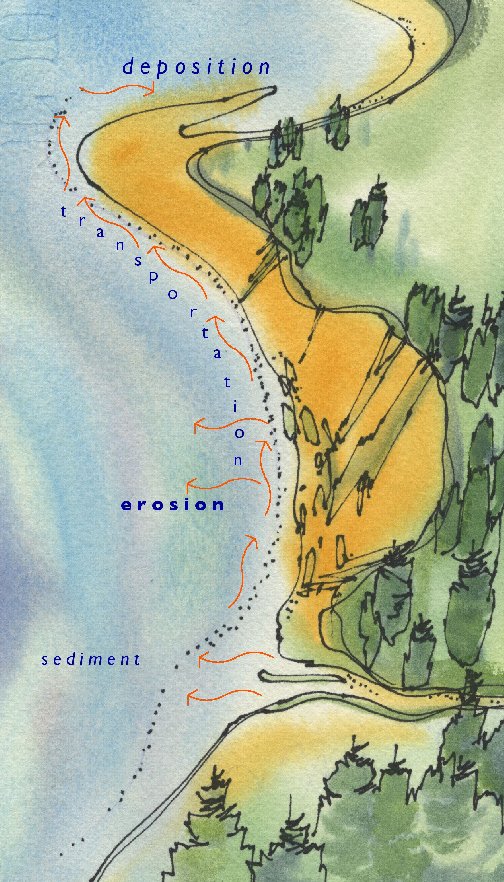Shoreline Modifications
To understand how hardening the shoreline can change our beaches, it is important to know how a beach works.
Beaches do not sit idle. They are always changing through the seasons and over time. They are dynamic. They change in size, and type of substrate, affected by storms, tides and currents. Accreted lands (lands that grow as sediment is naturally deposited there) grow and shrink over time.
As the image below shows, beaches are typically formed by currents picking up sediments (e.g. fine sand) from mouths of rivers, and from the base of eroding cliffs and bluffs. The currents then carry the sediment along the shoreline until they reach a place where they deposit the sediment. It is that deposit zone that sandy beaches grow and are maintained. Without a regular source of fines, or sandy sediment, these beaches can’t be nourished and will change from sandy to gravel and/or cobble depending on the currents and waves and sediment sources.

MVIHES has mapped the shoreline modifications, including shoreline hardening and anthropogenic modifications, on the nearshore between Craig Creek and Little Qualicum River.